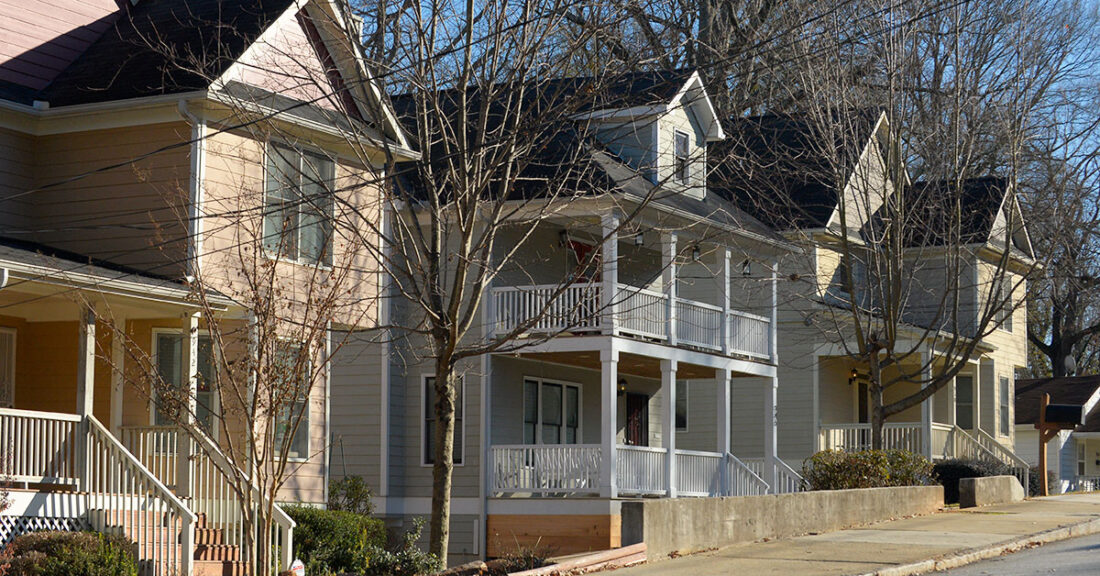Tool Kit Offers Strategies for Preserving Affordable Housing

Unsubsidized affordable small- to medium-scale multifamily rental units are a vital source of housing for families of color that is being threatened amid the coronavirus pandemic as investors buy property from financially burdened owners. Tipping the Scale from Enterprise Community Partners, a tool kit produced with support from the Annie E. Casey Foundation and other funders, educates nonprofits, funders and developers on preserving the country’s supply of these affordable units.
Affordable housing and the pandemic
To be considered affordable, housing in the United States cannot cost more than 30% of a household’s income. Unfortunately, as rent and home prices continue to climb, low- and moderate-income households often struggle to find housing that meets this definition. The pandemic has spurred additional financial pressures for many families and could cause as many as 15 million mortgage defaults. In anticipation, private equity firms are raising money to buy distressed properties like homes and apartment buildings. These outside investments could increase home and rent prices in low-income neighborhoods, which are disproportionately composed of households of color.
Now, the preservation of affordable housing is even more critical — particularly the preservation of small- to medium-scale multifamily (SMMF) rental units. SMMF properties (residential buildings with two to 49 units) are an important part of unsubsidized affordable housing, representing 54% of the nation’s rental stock. The tool kit specifically targets properties that don’t receive project-level subsidies but often still accept tenant-based rental assistance.
Promoting affordable housing in low-income communities
According to the tool kit, community partners can promote investment in low-income neighborhoods and strengthen local economies by acquiring and restoring these properties. New construction usually costs 30% to 50% more than restoring existing SMMF properties, making preservation a cost-effective path for growing the supply of affordable housing.
The tool kit outlines best practices in:
- Relationship building. Strong partnerships with owners and brokers are central to moving SMMF housing preservation projects through development, but there aren’t many examples of such partnerships. Without experience and established routes of action, partners often have to navigate new territory together.
- Property identification. Unsubsidized affordable SMMF housing is not regulated, which makes it difficult for developers to recognize properties with potential. The tool kit shows how to evaluate property characteristics, project feasibility, neighborhood market conditions and neighborhood access when deciding whether to invest in a property.
- Securing financing. The tool kit lists a number of resources for financing unsubsidized affordable SMMF properties. It also contains an interactive modeling tool that funders and nonprofits can use to determine if their restoration projects are feasible.
- Negotiation and deal closing. There are a few common obstacles when closing on unsubsidized affordable SMMF properties — for example, appraisal gaps and evidence of hazardous materials on the property. To avoid such snags, the tool kit provides guidance on how to identify potential issues and negotiate major deal points early.
- Rehabilitation. Unsubsidized affordable SMMF properties tend to be older and in need of maintenance. The tool kit guides funders on factors that affect rehabilitation — for example, zone and building codes, health and safety needs, energy efficiency and disaster resilience. Residents and community members can also provide vital insight into risks associated with certain properties and help with government approval.
- Property management. Stable occupancy and rent payments are critical for maintaining unsubsidized affordable SMMF properties, but rental income often can’t cover a full-time property manager. The tool kit shows how partnering with other property owners, investing in durable materials and minimizing compliance requirements for tenants can lower the cost burden of maintenance.
The tool kit closely examines factors specific to SMMF properties in Miami, Florida, and Atlanta, Georgia, where Enterprise Community Partners gathered local data on SMMF properties and income levels. In both cities, planners have already included the preservation of unsubsidized affordable SMMF housing in their affordable housing strategies.
Ongoing efforts to restore low-income communities
Safe, stable housing is one of the cornerstones to thriving communities. A recent case study details the Casey Foundation’s efforts to revitalize and preserve affordable homes in Atlanta’s Pittsburgh neighborhood, which has faced some of the highest poverty and unemployment rates in the state. As part of this initiative, which began in 2009 in the wake of the Great Recession, the Foundation and its partners renovated 43 homes, while also advancing multifamily preservation through technical assistance to property owners, supporting acquisition financing and providing consulting support to a local housing task force.
The lessons from this longstanding effort and the new tool kit on multifamily housing are particularly relevant now that the coronavirus pandemic has caused new threats to housing stability, particularly for families of color. “Affordable housing can be preserved through sustained and targeted action,” says Natallie Keiser, a senior associate at Casey who leads the Foundation’s community development efforts in Atlanta. “The Tipping the Scale Toolkit is a resource for taking effective action to retain small multifamily housing — a critical component of inclusive, equitable communities.”
To learn more about the Tipping the Scale Toolkit and its financial modeling tool, register for one of Enterprise Community Partners’ free webinars on preserving affordable multifamily housing in Miami and Atlanta. The Miami webinar will take place at 1 p.m. ET on Aug. 19 and the Atlanta webinar is scheduled for 10 a.m. ET on Aug. 21.






